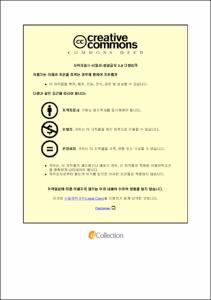DEA 모형을 이용한 마른김 가공업체의 경영효율성 분석
- Alternative Title
- A Study on the Management Efficiency of Laver Drying-processing Company using Data Envelopment Analysis
- Abstract
- The purpose of this paper is to analyze the relative efficiency of dried laver processing companies in Korea and provide the development direction and improvement plan for the dried laver industry.
For a long time laver has not been considered as a food by many people across the world. However, the world market has discovered laver as a health food thus expanding consumption of it from Asian countries into the Northern Hemisphere, therefore the laver industry is expected continuously to grow. To have export competitiveness in exports, we need to focus on dried laver industry first.
To measure the efficiency, Data Envelopment Analysis Model was used which is non-parametric efficiency measurement and input- oriented BCC model suggested by Banker, Charnes, and Cooper(1984). Also Rank-sum test suggested by Wilcoxon-Mann-Whitney was used to see if there is difference between exporting companies and non- exporting companies.
Data on 76 dried laver processing companies, out of 82 companies, by excluding 6 companies with inaccurate data, based on survey results were selected as the subjects for DEA and used EnPAS 1.0 introduced by Man-hee Park(2008).
In this study, the following elements were used : the number of days for factory utilization, watery laver input, size of laver drying machine, the number of employees and facility investment as the input variables, annual production and annual sales as the output variables.
This paper estimated the technical efficiency, pure technical efficiency and scale efficiency of dried laver processing companies and investigated the factors influencing the performance of them.
As a result of DEA, the average efficiency rate is shown that the technical efficiency is 84.90%, the pure technical efficiency is 93.83%, and the scale efficiency is 86.65%. And based on BCC results, 38 companies are relatively efficient. Comparing pure technical efficiency and scale efficiency, it showed that inefficiencies caused by scale of the company was greater than inefficiencies caused by the scale of technical matter. It implies that expanding the size is essential for achieving high-efficiency of dried laver processing company.
DEA also provides a reference set which is valuable information for inefficient companies to find benchmarking companies and to improve their efficiency. Based on the results, I did additional interviews with inefficient companies and could find factors causing inefficiency in the processing and distribution.
- Issued Date
- 2017
- Awarded Date
- 2017. 2
- Type
- Dissertation
- Publisher
- 부경대학교 대학원
- Affiliation
- 부경대학교 대학원
- Department
- 대학원 해양수산경영학과
- Advisor
- 장영수
- Table Of Contents
- Ⅰ. 서론 1
1. 연구배경 및 목적 1
2. 연구의 범위 및 방법 2
3. 연구의 구성 3
Ⅱ. 이론적 배경 및 선행연구 4
1. 국내 김 산업의 이해 4
가. 김 생산 현황 6
나. 김 수출 현황 11
2. 자료포락분석(DEA)에 대한 이론적 배경 15
가. 효율성의 의미와 DEA 개념 15
나. DEA 모형 16
3. 선행연구 검토 23
가. 김에 관한 선행연구 23
나. DEA에 관한 선행연구 25
Ⅲ. 연구설계 30
1. 연구모형 및 조사방법 30
가. 연구모형 30
나. 조사설계 32
다. 조사결과 34
2. 변수의 설계 및 선정 36
가. 투입·산출변수 선정 36
나. 변수의 상관관계 분석 38
Ⅳ. 실증분석 40
1. 변수의 기술통계량 40
2. 효율성 분석결과 41
가. 규모효율성 분석 42
나. 규모수익 분석 44
다. 준거집단 분석 45
라. 비효율적 업체의 투입과다분 및 투영점 분석 49
3. 순위합 검증 51
4. 마른김 가공업체의 비효율성 유발 요인 54
Ⅴ. 결론 59
1. 연구요약 59
2. 연구의 시사점 및 한계점 61
참고문헌 65
부록 1 68
69
70
- Degree
- Master
- Files in This Item:
-
-
Download
 DEA 모형을 이용한 마른김 가공업체의 경영효율성 분석.pdf
기타 데이터 / 1.55 MB / Adobe PDF
DEA 모형을 이용한 마른김 가공업체의 경영효율성 분석.pdf
기타 데이터 / 1.55 MB / Adobe PDF
-
Items in Repository are protected by copyright, with all rights reserved, unless otherwise indicated.